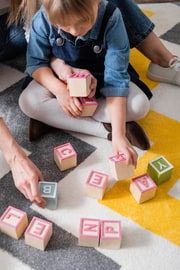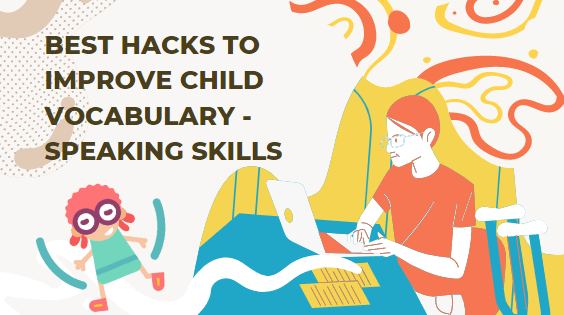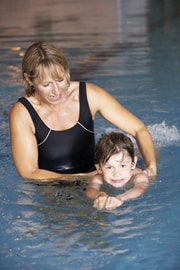How To Prepare Before Your Baby Arrives
Are you a first-time parent? If so, you may be wondering what you need to do before your baby arrives. There is a lot to prepare for, and it can be overwhelming. Don’t worry – we are here to help! In this blog post, we will discuss the most important things you need to do before your baby arrives.
Here are some tips and tricks to help make the process easier for you!
Make Sure You Get The Right Crib Size
When it comes to cribs, size does matter. You want to make sure you get a crib that is the perfect size for your baby and equip it with the right cot. Otherwise, they may not be able to sleep comfortably or safely in it. To do this, you will need to know the dimensions of your baby’s nursery. Once you have these, you can start shopping for cribs! If you are unsure about what size crib to get, you can always ask your pediatrician for advice. They will be able to tell you the ideal size for your baby’s nursery.
Prepare All Must-Haves
Preparation is the key for a smooth transition. So, set up your baby’s nursery with a crib and changing table. Don’t forget to buy baby nappies, a good quality baby monitor, first aid kit, and a humidifier.
Don’t hesitate to take prenatal classes and read parenting books. This will help you prepare psychologically before the baby arrives. It is also crucial to plan for childcare, update health insurance, and consider financial adjustments. Furthermore, you also have to prepare a hospital bag with important documents.
Spend quality time with your partner and establish a support system of friends and family for emotional well-being. Set up a comfortable sleep environment for yourself and the baby, and consider a sleep schedule. Take care of legal matters by updating or creating a will and considering life insurance. Ensure the car seat is correctly installed in your vehicle well before your due date. Plan for postpartum recovery, including meals and support.
Baby Proof Everything
You need to babyproof everything before your little one arrives. This means getting rid of anything that could be a choking hazard, covering up any electrical outlets, and putting away any harmful chemicals. You also want to make sure that your childproofed doors and windows are installed properly. It’s also good idea to get some stair gates to keep your little one from getting into places they shouldn’t be.
Additionally, baby-proof your home by identifying sharp edges, small objects, and electrical outlets. Secure furniture by anchoring heavy items and installing edge bumpers. Place baby gates at stairs and doorways, and cover electrical outlets. Use cord organizers, install window guards, and secure cabinets with childproof locks.
By following these tips, you can help create a safe environment for your child before they even arrive. And once they’re here, you can rest assured knowing that you’ve done everything you can to prepare for their arrival. So go ahead and get started on babyproofing your home today!
Make Sure You Are As Healthy As You Can Be
Although having a baby is wonderful, it also presents many new emotional and physical challenges. To help you (and your baby!) navigate these changes, it’s important to make sure you are as healthy as you can be before your little one arrives.
Start by talking to your doctor about any concerns you have and getting up-to-date on all of your vaccinations. This is also a good time to start taking a prenatal vitamin if you haven’t already. Eating a healthy diet and getting regular exercise will help you feel your best during pregnancy (and beyond!).
If you have any chronic health conditions, such as diabetes or high blood pressure, be sure to work closely with your doctor to manage them during pregnancy. Additionally, if you smoke, now is the time to give it up! Smoking during pregnancy can cause serious health problems for both you and your baby.
Moreover, regular detailed check-ups throughout your pregnancy are essential to ensure the health of both you and your baby. Lots of future mothers visit a private maternity hospital where they run all the necessary tests and keep a close look at the development of the baby. This can give you peace of mind as well as help your healthcare providers to identify any potential problems more quickly.
Taking care of yourself before your baby arrives will help ensure a healthy and happy pregnancy for both of you. So don’t forget to take care of yourself, too!

Make Sure You Have Pumps Ready
If you are breastfeeding, make sure you have pumps ready. You will need to pump every few hours to keep your milk supply up. It is also a good idea to have some stored in the freezer for when you go back to work or school.
Another thing to think about is childcare. If you plan on going back to work or school, you will need to find someone to watch your baby. This can be a family member, friend, or daycare. Make sure you do your research and visit the facility before making a decision. You should also have a backup plan in case your first choice doesn’t work out.
Make Room In The Fridge
Making room in the fridge may seem like a small thing, but it’s actually really important. When you have a baby, you’re going to need a lot more food than you think. You’ll need baby formula, breast milk, and food for your little one. Having enough space in the fridge will help you keep everything organized and easy to find.
Another thing to keep in mind is that you’ll need to sterilize all of your baby’s bottles and nipples. This can be done by boiling them for five minutes or using a special bottle Sterilizer. You’ll also need to have a good stock of diapers on hand, as well as wipes and other changing supplies. It’s always better to be prepared than to have to run out to the store in the middle of the night!
Baby proof everything, make sure you are healthy, have pumps ready, and make room in the fridge.
Get Your Car Ready
Most parents focus on making sure they have everything at home to care for their baby. Yet, for children born in a hospital, their first experience when you take them home is the car. And when it comes to the car ride home, and many rides to come, it’s all about safety. Ensure your car is ready with changes your car needs when you have a child. There is the obvious car seat installation, but proper installation can never be taken for granted and should be done well in advance so that you are familiar with all the safety features.
Schedule a thorough safety check for your car, including brakes, tires, lights, and seat belts. Ensure that all necessary repairs and maintenance tasks are completed before the baby arrives. Consider adding childproofing measures to your vehicle, such as window locks and door protectors. And stock your car with emergency supplies like a first aid kit, extra diapers, blankets, and non-perishable snacks.
In conclusion, there are a few things you should do to prepare for your baby’s arrival. You’ll have your hands full so it’s never too early to get started. By following these tips, you can help make sure that both you and your baby are ready for the big day!
Additional Reads
- Spread the word about these special baby gift ideas.
- Everything a parent should know about baby teeth.










